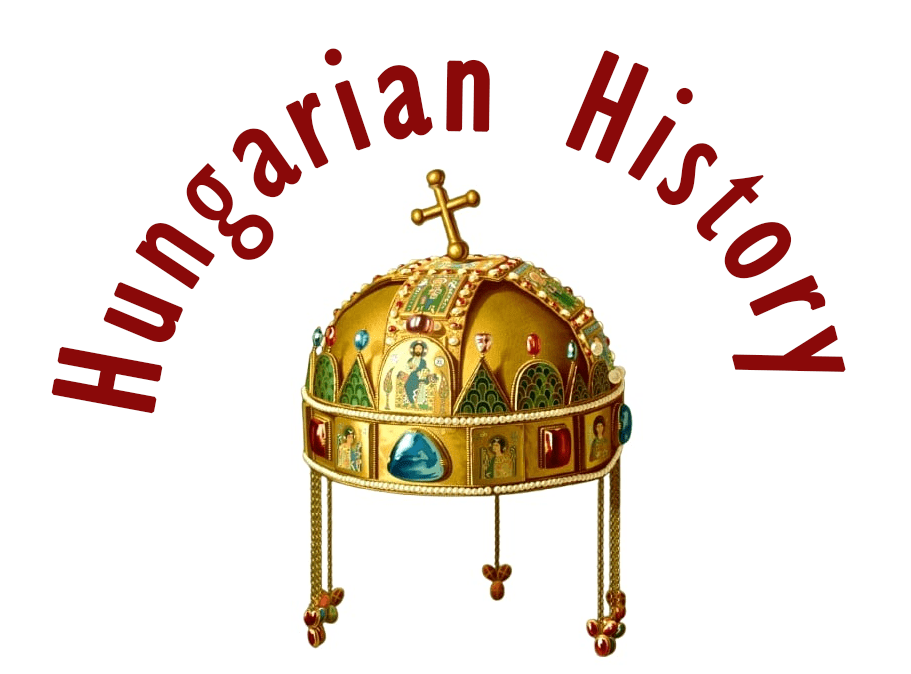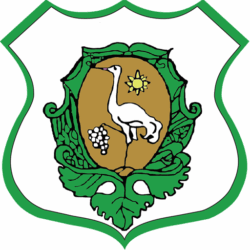Székelyhíd (Romanian: Săcueni, German: Zickelhid, Turkish: Sikelhid) is a border town in Bihar County, Romania, but it belonged to Hungary before 1918. In Hungarian, its name stands for “The Székely Bridge”. The name of Székelyhíd was first mentioned in a document in 1217, before the Mongol invasion, as the Székely soldiers of the Bihar castle, and their lieutenant, Lukács, were also mentioned. Location: https://tinyurl.com/4vpyfmap

According to a legend, the Székelys were settled here at the end of the 10th century to guard the bridge of the Ér River. The name was mentioned in a document in 1278 as Zekulhyd and in 1325 as Zekulhyda. The first known owner of the settlement was Péter, the son of Dorog from the Gutkeled clan, and in their time, the settlement had a customs house. The descendants of the Dorogs held the settlement until the end of the 14th century.

In 1402, the village was acquired by the Zólyomy of Albis family members, namely Master Zólyomy Márton and his sons David I and Lőrinc I, who by the end of the 13th century had developed the small village into a town, which soon began to develop. In 1417, the Zólyomys won the right to acquire the market rights of Székelyhíd from King Zsigmond, and soon afterwards they also acquired the right to hold a weekly fair.

In 1460, they were also granted permission by King Matthias to build a wooden or stone castle on an island in the Ér River, with bastions, walls, ramparts, and other necessary buildings. Then, they built a simple earthen fortification on the site. In the decade after the construction of the castle, the construction of the present Reformed church began, in the pointed-arch Gothic style, on the site of the former Árpád-era ancient Romanesque church.

In 1514, the priest Lőrinc, who was a second-in-command to Dózsa György, occupied Székelyhid and had 4 members of the Zólyomi family killed. In 1596 Székelyhíd was owned by Warkocs György and Zólyomi Miklós.
The settlement was burnt down by the Crimean Tatars during the siege of (Nagy)Várad (Oradea) in 1598, but the deep marshes protected the castle. According to the 1601 Székelyhíd registry, the castle was built in the middle of the swamp, not much stone, but rather wood and earth, its houses were simple, the courtyard was small. However, it could only be reached by a long bridge, and because of the extensive marshland and reeds, it could only be taken by starvation.

In the early 1630s, Zólyomi Dávid fortified the castle, but it always remained a palisaded castle (the four bastions were all “raised to a regular shape with big old beams”). Zólyomi built a new one to replace the burnt down city: “and before the bridge of the castle, a new city was built, surrounded by big deep moats and strong wooden fences … In the newly built fortress camp, he refused to give out the serfs of anyone according to the law of the land.”

In 1633, Prince Rákóczi I György sentenced Dávid Zólyomi to be beheaded and deprived of his property. He donated the confiscated Székelyhid castle to his son, later to become Prince Rákóczi György II. Fortification works on the palisade castle of the Zólyomis began in January 1638. Rákóczi entrusted the construction of the bastions to the young chief lord Haller Gábor, who had studied in the German Lowlands and whose advice the prince later sought for the construction of several castles. The construction was supervised by Ibrányi Mihály, the vice-captain of Várad Castle. The works were greatly hindered by the 6-9 m deep swamp, and the foundations of the first bastion were already problematic.

First of all, alder tree piles four inches thick were driven into the damp, loamy soil, four yards wide, so densely that the piles overlapped, and only then was the stone wall laid on top. It was believed that if the alder stakes were constantly in water, they would not rot, but on the contrary, they would harden so much that they would almost turn to stone. The lower part of the bastion was built of termite stone, the larger part of brick, which was burnt on the spot. Work on the second bastion began at the end of 1638, and on the third in January 1640.

On September 1, 1641, Prince Rákóczi György I instructed his son, later Prince Rákóczi György II, to travel to Székelyhíd Castle and examine the progress of the construction (“and see what they have done there this summer, the completed bastions are as they are, is there enough water for the moat? When did they begin to build the fourth bastion, and are there bricks and lime, and how far this year can they raise the stone foundation?”).

The castle was finally completed in 1642, and the four bastions were named after it: Leader’s Bastion, Wheel Bastion, Drum Bastion, and Telegdi Bastion. They were defended by 12 cannons provided by the cannon foundry of Gyulafehervár. The inner residential buildings remained poor, and there was no time to repair and decorate them because of the other construction works of the two Rákóczis. In June 1646, György the Younger remarked: ‘Today I have arrived at our wretched house’

The outer defences were built after 1644, but they are not yet visible on the plan in Gualdo Priorato’s book, only on Ssicha’s drawing of 1664.
In 1659, the troops of the second-time prince Rákóczi II György gathered at Székelyhíd against the Turkish-supported Barcsay Ákos. In April 1660, the Buda pasha Szeidi Ahmed launched an army against Rákóczi, sacked the city of Debrecen, besieged Pocsaj, and then massacred the inhabitants who had fled to the swamps around Székelyhíd on 10 May (he did not attack the castle). He then destroyed Nagykereki. On 22 May 1660, Rákóczi lost a battle to the combined forces of the outnumbered Buda Pasha Szeidi Ahmed and Serdar Koss Ali. The prince was also mortally wounded and died in Nagyvárad on 7 June.

The Turkish army marched against Várad, “holding Barcsay Ákos in honorable captivity”. The siege ring around the castle was closed on 14 July, and on 27 August the Turks captured Várad. They then took Szentjobb, Sólyomkő and Papmező. An attempt was also made on Székelyhíd, but the attack was thwarted by the castle’s major, Borbély Albert. With the fall of Várad, Székelyhíd became the strongest castle in Partium.

In 1661, the Diet of Sászrégen elected the former general of Rákóczi György, Kemény János, as its prince. In early March, Kemény asked for support from Emperor Léopold I against the Turks. In May 1661, under the leadership of Montecuccoli, the gathering of troops to help Transylvania began. In the summer, the Ottomans began their attack on Transylvania, and Kemény retreated with his small army to the area around Huszt. To help Kemény, imperial troops were sent to the fortresses of Székelyhíd, Kővár, Szamosújvár, Kolozsvár, and Bethlen, and Montecuccoli then withdrew his troops from Transylvania by superior order.

In 1663, the German garrison of Székelyhíd was made up of the De Souches, Strozzi, and Cobb regiments, under the command of Baron Lieutenant-Colonel Tieffenthal. On 25 November, the garrison, rebelling over many months of back pay, expelled Tieffenbach and his officers from the castle and distributed the officers’ property among themselves. From Szatmár, Colonel Cobb attempted to bargain with the rebels, but was unsuccessful.

On 1 January 1664, the rebels surrendered Székelyhid to the envoys of the Transylvanian Prince Apaffy Mihály, who paid 10 thalers to each of the 500 rebels and hired them as his mercenaries. Boldvai Márton became the prince’s captain of Székelyhid, and Jacob Alt was the superior of the German soldiers. Boldvai had to overcome a plot by German soldiers who wanted to return the castle to Habsburg hands.

During the Turkish campaigns of 1663-64, Teleki Mihály negotiated with the imperial government on behalf of Apaffy. One of the conditions of a possible agreement was that an Imperial guard should again be stationed at Székelyhíd to prevent it from falling into Turkish hands. However, Boldvai repeatedly wrote in his letters that he would not hand over the castle to either the Turks or the Germans. However, these plans were overruled by the Peace of Vasvár, which stated that the castle of Székelyhíd must be destroyed. On hearing the news, Apaffy wrote to Teleki to burn the documents of the secret negotiations.

The Turks urged the Transylvanians to destroy the castle, and threatened them that if they did not do so, the Grand Vizier would come with his army to destroy it. However, the castle guards refused to remove the troops and destroy the castle because of their back pay and asked for a guarantee that if they left the castle, there would be no retaliation from either side. After the agreement was reached, the cannons and ammunition were transferred from the castle to Nagykároly and were still there in 1667, according to the inventory. An inventory of the military equipment removed, dating from 1665, has survived, according to which the castle was well supplied with artillery: there were 27 pieces of various cannons.

The ” destruction ” of the castle began on 9 January 1665 with the demolition of the Bastion of the Leader and the northern outer ramparts. The work was supervised by the military engineer Georg Ssischa, who also drew drawings of the two states of the castle (gallery). The demolition was carried out by 24 miners and a large number of manual labourers. A total of 32 shafts were drilled, and 60 hundredweight of gunpowder was used in the blasting. On 1 February, a delegation from the Pasha of Várad inspected the demolition of the castle, and the last intact bastion, the Kerek bastion, was blown up in front of them.

The stones from the castle were used to build the nearby manor house, and the deep marsh has now been drained. The only reminders of the castle are the mounds of earth.

In 1910, 5235 of its 5279 inhabitants were Hungarian. In 2011 it had 11,113 inhabitants, of which 9,825 (88.4%) were Hungarians, 684 Romanians, 590 Gypsies and 13 speakers of other languages.
Sources: Hungarian Wikipedia, and Várlexikon https://varlexikon.hu/szekelyhid

Dear Readers, I can only make this content available through small donations or by selling my books or T-shirts.
Please, support me with a coffee here: https://www.buymeacoffee.com/duhoxoxa
You can check out my books on Amazon or Draft2Digital. They are available in hardcover, paperback, or ebook:
https://www.amazon.com/dp/198020490X or at https://books2read.com/b/boYd81

My work can also be followed and supported on Patreon: Become a Patron!http://Become a Patron!
Become a Patron! Donations can be sent by PayPal, too: https://tinyurl.com/yknsvbk7


https://hungarianottomanwars.myspreadshop.com/all
Subscribe to my newsletter here: https://tinyurl.com/4jdjbfkn
Here are more pictures of Székelyhíd:






















